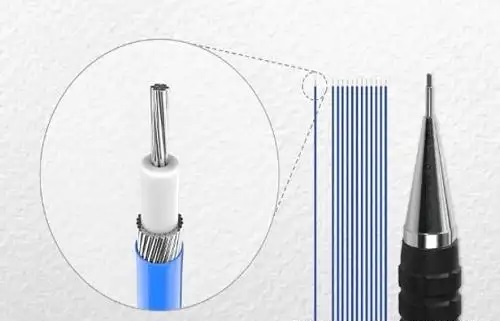Categorization:Harness Component
In the field of high-end electronic devices, there is a small yet crucial component that is often overlooked by ordinary users but is the "secret weapon" that is understood among professionals—the extremely thin coaxial cable. Whether it's a flagship smartphone, top-tier medical equipment, or high-end drones or military communication devices, this seemingly insignificant small wire material is increasingly favored. So, why do high-end devices have such a fondness for it?
What is ultra-fine coaxial cable?
In simple terms, a coaxial cable is a multi-layered cable structure consisting of an inner conductor, an insulating layer, an outer conductor (usually a metal braid), and a protective layer. The extremely thin coaxial cable retains the advantages of the coaxial structure while reducing the diameter to the utmost thinness. Common specifications include 0.26mm, 0.37mm, 0.46mm, and even thinner. Don't underestimate its tiny appearance; there is a "hidden world" inside this wire.
Why do high-end devices rely on ultra-fine coaxial cables?
Ultimate signal transmission performance
High-end equipment has extremely high requirements for signal quality, especially for high-speed data and high-frequency radio frequency signals. The extremely thin coaxial cable has the advantages of low loss, strong anti-interference, and stable signal, ensuring signal lossless and low delay in signal transmission inside laptops, high-definition camera modules, as well as image transmission in medical equipment.
High space utilization rate
In iPad, drones, or wearable devices, every millimeter needs to be meticulously calculated. The ultra-thin coaxial cable is soft, slender, and easily bendable, capable of flexible wiring in confined spaces without affecting the layout of other components. This is also the reason why thin and light flagship smartphones cannot do without it.
Excellent anti-interference ability
High-end equipment has a dense array of electronic components and many interference sources. Ordinary wires are easily affected by electromagnetic waves, while the multi-layer structure of extremely thin coaxial cables, especially the metal shielding layer, can effectively isolate external interference, ensuring pure and stable data transmission.
Stable and durable, adaptable to complex environments
Military equipment, industrial automation systems, and medical surgical instruments require wire materials that are both anti-interference and wear-resistant, bend-resistant, and corrosion-resistant. Extremely fine coaxial cables fully meet these needs, and can work stably for a long time even in harsh environments.
Which devices are in use?
Smart wearable devices
Medical endoscopes, surgical robots
Military radar, aerospace communication
VR/AR Head-Mounted Display High-Speed Data Cable
High-speed industrial camera
Drone control system
A seemingly insignificant line, it is actually a "hidden master" of the performance and stability of high-end equipment. The extremely thin coaxial cable integrates high performance, high reliability, high flexibility, and high anti-interference capabilities, and is an indispensable key component of modern high-end equipment. Next time when you disassemble or observe the internal structure of the equipment, take note of these extremely thin coaxial cables. You will find that truly excellent design often hides in the details. Do you know of any other equipment that contains this "black technology cable"? Let me know in the comments!
We have long been focused on the design and customization of high-speed signal cable harnesses and ultra-fine coaxial cable harnesses, committed to providing stable and reliable high-speed interconnection solutions. If you have any related needs or would like to learn more, please contact: Manager Yin.18913280527 (WeChat number)。